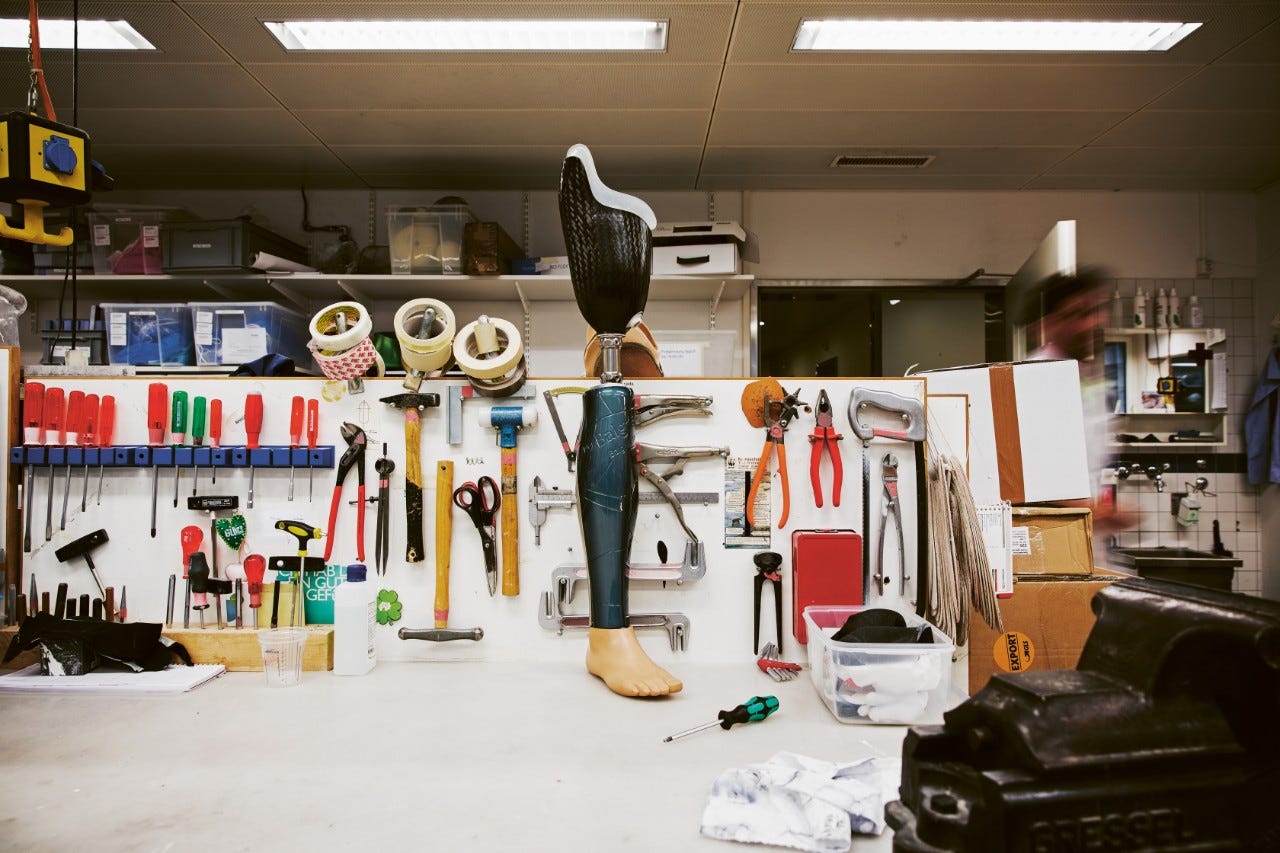People and machine united
Researchers at ETH Zurich are working on high-tech prostheses. ETH Professor Robert Riener explains how far research has progressed and what Bach has to do with it.

When body and technology merge to make everyday life easier for people with restricted mobility, researchers at ETH Zurich's Laboratory for Sensorimotor Systems are at work. Her vision: to teach prostheses to feel.
Superhuman abilities thanks to exoskeleton?
ETH professor and robotics expert Robert Riener is quick to explain that you’ll only see exoskeletons or prostheses that give you superpowers in films. And Riener is sure that superheroes who are able to storm through the desert heavily laden for days on end will remain in the realm of fantasy for quite some time to come. Not least because the batteries run out after half an hour.
Passive legs, active arms
Example of prosthetic legs: If we take the example of an artificial leg, it simply swings passively when the wearer moves their body and starts to walk. “Even the most futuristic looking prostheses used by top athletes are no more than very simple and robust technology in the form of ultra lightweight, elastic springs,” says Riener.
However, this passive principle is a handicap when it comes to walking uphill or climbing stairs, because in these cases the artificial knee would have to be able to generate power. "There are already active knee prostheses," explains Riener, "but they cost up to 80,000 Swiss francs and the technology is still not mature enough." They need to be even more reliable and easier to use in order to prevent falls and injuries in everyday life as far as possible.
““It will still be a long time before anyone can play Bach on the piano while wearing a prosthesis.”
Knowing how the prosthesis moves
In contrast, much more state-of-the-art technology is already used in arm prostheses today. This is partly because we perform complex movements with our arms and hands which require their own propulsion, but also because the risk of injury is lower. “If an artificial hand drops a glass of water, it’s not as dangerous as a fall caused by an unreliable knee prosthesis,” adds Riener to explain the different levels of development. Today there are already arm prostheses with many motors that drive the wrist and fingers individually. Muscle electrodes measure the tension of muscles in the arm stump and translate it into the movement of the prosthesis.
Commands can already be sent from the brain to the prosthesis, but it’s more difficult to send sensory feedback from the prosthesis to the brain. Or, to put it differently, if a person wearing a prosthesis can’t see it, they have no idea whether their artificial hand is open or making a fist. A challenge for Riener and his team: “We’re experimenting in the lab with prostheses and exoskeletons that feed the signal of movement back to the skin or even into the body. This makes it possible to feel the movement.”
Artificial feelings
Talking of feeling, another field of research focuses on high-tech prosthetic fingers which can even transmit sensations such as soft, rough or fine to the nerves. It is important to translate electrical impulses from the artificial fingertip in such a way that they stimulate the nerves correctly, as otherwise even lighting a match becomes a Herculean task because the strength of the fingers can no longer be calculated reliably. As Riener says: “It will still be a long time before anyone can play Bach on the piano while wearing a prosthesis. But we’re working on it.”







